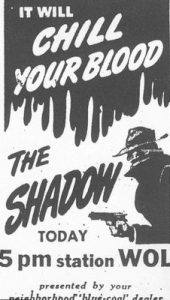
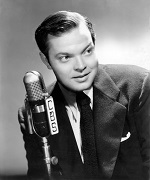 Who knows what evil lurks in the hearts of men?
Who knows what evil lurks in the hearts of men?
The Shadow knows!
The Shadow (1937-1954) aired “The Caverns of Death” on August 21, 1938 as its 48th episode of approximately 690. Though only about 275 are known to still exist, the number is subject to change as new episodes are unearthed from time to time. This is the first episode we have featured since June of 2020, and the second since November of 2019 (as our 500th posting) out of some two dozen overall, and I felt it was time for another, for The Shadow has proven quite popular with Golden Age radio fans, and especially fans of the Shadow in both radio and magazine formats.
The following is an abridged account of the character’s radio and magazine history for those coming to The Shadow for the first time. Long-time listeners may have forgotten some of the details, so if you are among them, refresh your memories or take a moment to grab your favorite beverage of choice before listening to this episode.
The history of the Shadow character is long and storied. A bare bones synopsis begins on July 3, 1930 when the narrator of magazine publisher Street & Smith’s radio version of its pulp magazine, Detective Story Magazine, was given the name of The Shadow. This mysterious voice who merely introduced and narrated the radio show, but was not a character in any of the episodes, became so popular after it was taken over by Frank Readick, Jr. and his spooky, phantom laugh that on April 1, 1931 The Shadow magazine was born. It ran for 325 issues, 282 of them written by Walter B. Gibson (1897-1985) under the house name of Maxwell Grant.
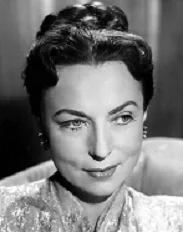 The Shadow debuted on radio on September 26, 1937 and delighted fans for more than seventeen years, closing shop on December 26, 1954. The radio show began its long run on the Mutual Broadcasting Network on Sunday evenings and was sponsored by Blue Coal. From its inception until just past its first year (Sept., 1937-Sept., 1938) the voice of the young 22-year-old Orson Welles (1915-1985, photo top right) would be heard as that of the Shadow, and Agnes Moorehead (1900-1974, photo at left) would play the role of “the lovely Margot Lane,” his “faithful companion” and aide. Following Welles’s departure (“Professor X” was his final episode) Bill Johnstone became the Shadow for the September 25th, 1938 episode, at the beginning of Season Two. Johnstone (1908-1996) was then succeeded by Bret Morrison (1912-1978), who, in two stints (1943-44 & 1945-54), was radio’s the Shadow for ten of its seventeen years (though others besides these three mainstays would ascend to the role). Moorehead would also exit the show (in 1940) to follow Welles after he formed his Mercury Theater on the Air, as well as appear in several of the young genius’s classic films.
The Shadow debuted on radio on September 26, 1937 and delighted fans for more than seventeen years, closing shop on December 26, 1954. The radio show began its long run on the Mutual Broadcasting Network on Sunday evenings and was sponsored by Blue Coal. From its inception until just past its first year (Sept., 1937-Sept., 1938) the voice of the young 22-year-old Orson Welles (1915-1985, photo top right) would be heard as that of the Shadow, and Agnes Moorehead (1900-1974, photo at left) would play the role of “the lovely Margot Lane,” his “faithful companion” and aide. Following Welles’s departure (“Professor X” was his final episode) Bill Johnstone became the Shadow for the September 25th, 1938 episode, at the beginning of Season Two. Johnstone (1908-1996) was then succeeded by Bret Morrison (1912-1978), who, in two stints (1943-44 & 1945-54), was radio’s the Shadow for ten of its seventeen years (though others besides these three mainstays would ascend to the role). Moorehead would also exit the show (in 1940) to follow Welles after he formed his Mercury Theater on the Air, as well as appear in several of the young genius’s classic films.
To arrest possible confusion arising from seeming inconsistencies between the print and radio versions of The Shadow it is important to note the following differences (though there are others):
The original print version of the Shadow portrayed him without any powers at all; he was a shadowy figure of the darkness, a cunning sleuth dedicated to overthrowing evil wherever he found it. It wasn’t until the radio version came along that he was imbued “with the power to cloud men’s minds” from a secret he learned in the Orient.
In The Shadow novels, Miss Lane’s first name was spelled Margo; for radio it was Margot.
In The Shadow novels, Margo Lane was not aware of the Shadow’s secret identity; for the radio scripts she was the only one who did know his secret identity.
In the magazine, the Shadow’s primary alter-ego was (eventually) revealed as that of Kent Allard; his radio alter-ego was Lamont Cranston.
As for “The Caverns of Death,” the story opens with a class of students on a field trip to a cave, inside of which is a roped off crater. While the guide is giving the traditional spiel about the crater the rope gives way and the students plummet into the dark depths of the crater. When the Shadow finds out about the circumstances surrounding the tragic accident he becomes suspicious, and as it turns out with good reason. As the Shadow (and Margot) investigate (even climbing down into the perilous recesses of the crater) the mystery becomes even more remarkable, with totally unexpected results. What they ultimately discover makes for one of the more exciting adventures of the Shadow, as he uncovers the secret of “The Caverns of Death.”
The weed of crime bears bitter fruit. Crime does not pay. –The Shadow
Play Time: 29:30
{When this Shadow episode aired at the end of August 1938, the neighborhood gang was beginning to feel oncoming dread as the end of summer vacation would soon come to a end and back to school they would regrettably return. To push these thoughts away, they sought solace at the corner newsstand and some of their favorite magazines. Astounding (1930-present, now Analog) was always a must buy with its mind-expanding visions of scientific tomorrows and explorations of other worlds and galaxies throughout the vast unknowable corners of the universe. It was a monthly in 1938. Doc Savage (1933-49) came to be another of the revered heroic stripe as was the Shadow but with decidedly different attributes. Doc was (a doctor, scientist, adventurer, detective, and polymath who “rights wrongs and punishes evildoers.”). He also differed from heroes like he Shadow by surrounding himself with a small group of fellow crime fighters, each with a different area of expertise, and known as the “Fabulous Five.” Doc’s adventures would take him all over the world and relied (most of the time) on some form of scientific deduction or knowledge to help him and his crew to defeat all manner of evil doers. It was a monthly in 1938. Weird Tales (1923-54) came to be justifiably known as “the unique magazine,” and never ceased to amaze with its dark, bizarre, supernatural voyages into the unknown. It had an extremely loyal following and its iconic status among collectors has grown more and more over time. Of interest is that the cover to the issue below was by artist Margaret Brundage (1900-1976). Her cover art featured, more often than not, beautiful women in various stages of skimpy dress even unto partial or total nudity. Needless to say, Brundage’s cover art was a hit with fans and authors alike (some writing scenes into their stories in hopes Brundage would use them as inspiration for future covers). An amazing fact is that from June of 1933-August of 1936, Margaret Brundage graced the covers of Weird Tales no fewer than 39 times. As with the other magazines mentioned here, it was a monthly in 1938.]
[Left: Astounding, August 1938 – Center: Doc Savage, August 1938 – Right: Weird Tales, August 1938]
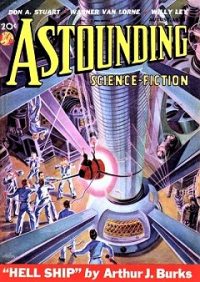
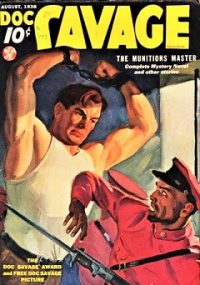
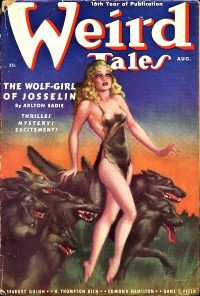
To view the entire list of weekly Old Time Radio episodes at Tangent Online, click here.
